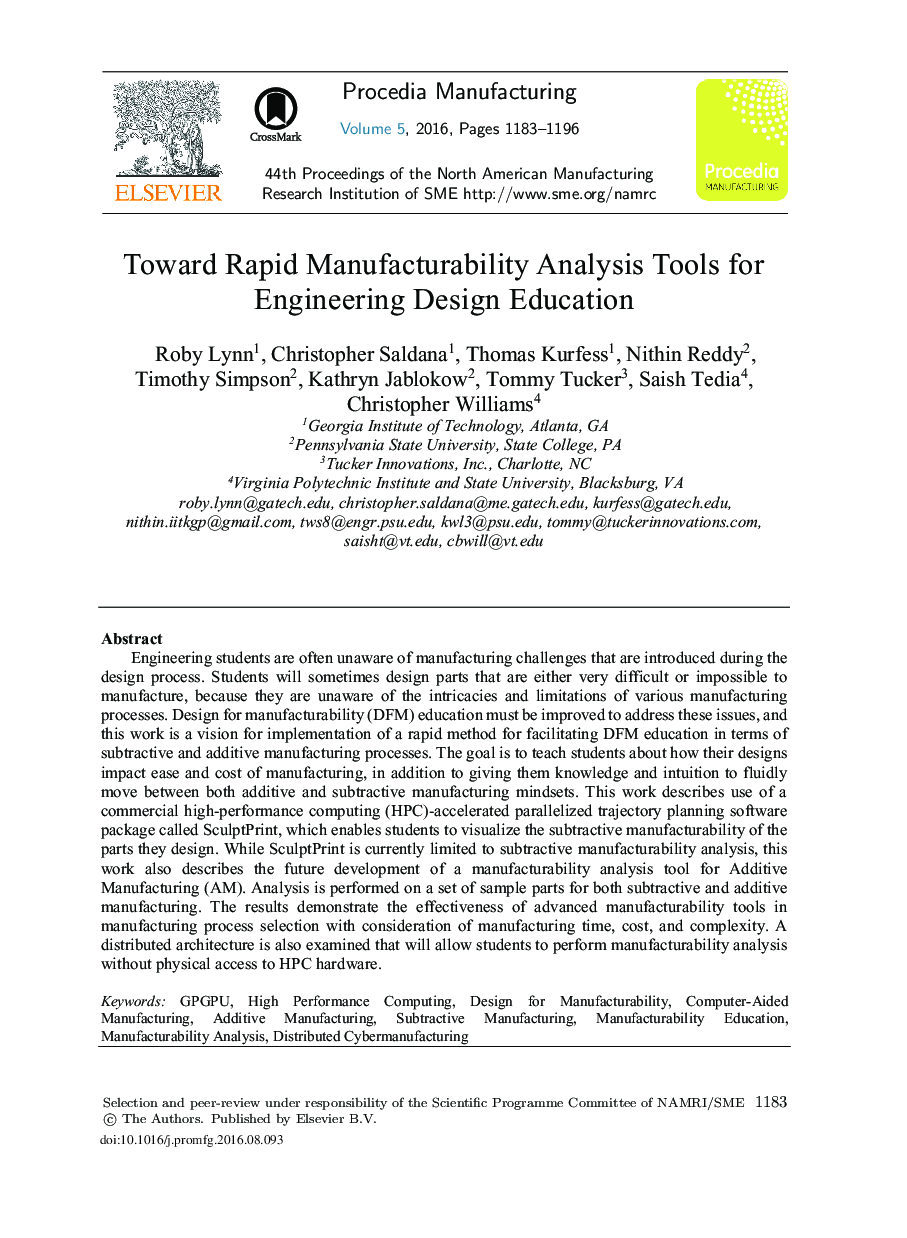| Article ID | Journal | Published Year | Pages | File Type |
|---|---|---|---|---|
| 5129093 | Procedia Manufacturing | 2016 | 14 Pages |
Engineering students are often unaware of manufacturing challenges that are introduced during the design process. Students will sometimes design parts that are either very difficult or impossible to manufacture, because they are unaware of the intricacies and limitations of various manufacturing processes. Design for manufacturability (DFM) education must be improved to address these issues, and this work is a vision for implementation of a rapid method for facilitating DFM education in terms of subtractive and additive manufacturing processes. The goal is to teach students about how their designs impact ease and cost of manufacturing, in addition to giving them knowledge and intuition to fluidly move between both additive and subtractive manufacturing mindsets. This work describes use of a commercial high-performance computing (HPC)-accelerated parallelized trajectory planning software package called SculptPrint, which enables students to visualize the subtractive manufacturability of the parts they design. While SculptPrint is currently limited to subtractive manufacturability analysis, this work also describes the future development of a manufacturability analysis tool for Additive Manufacturing (AM). Analysis is performed on a set of sample parts for both subtractive and additive manufacturing. The results demonstrate the effectiveness of advanced manufacturability tools in manufacturing process selection with consideration of manufacturing time, cost, and complexity. A distributed architecture is also examined that will allow students to perform manufacturability analysis without physical access to HPC hardware.
